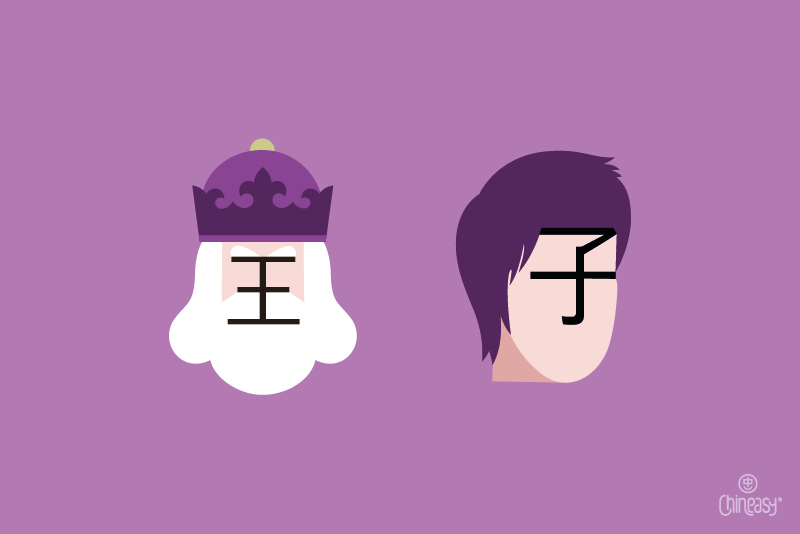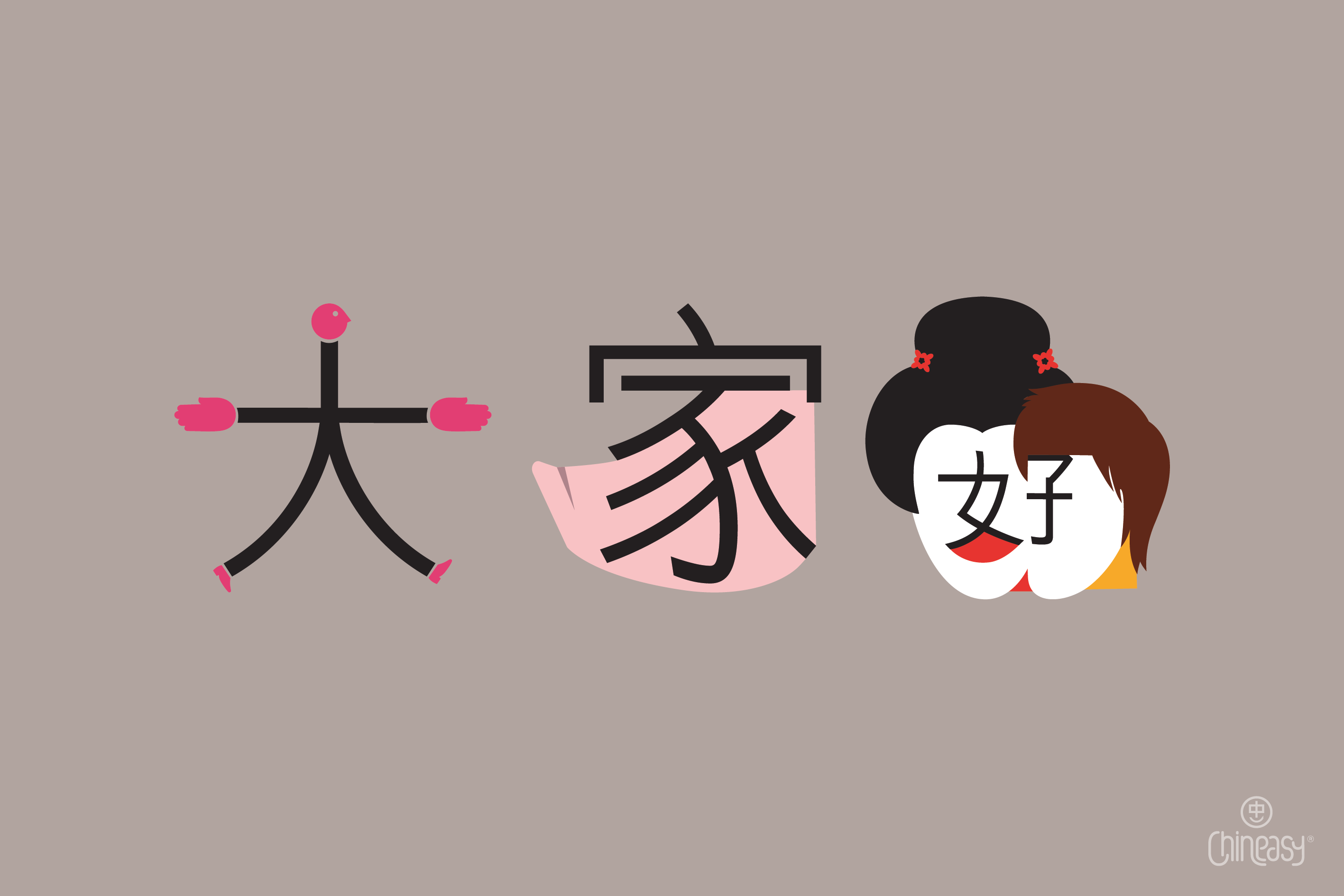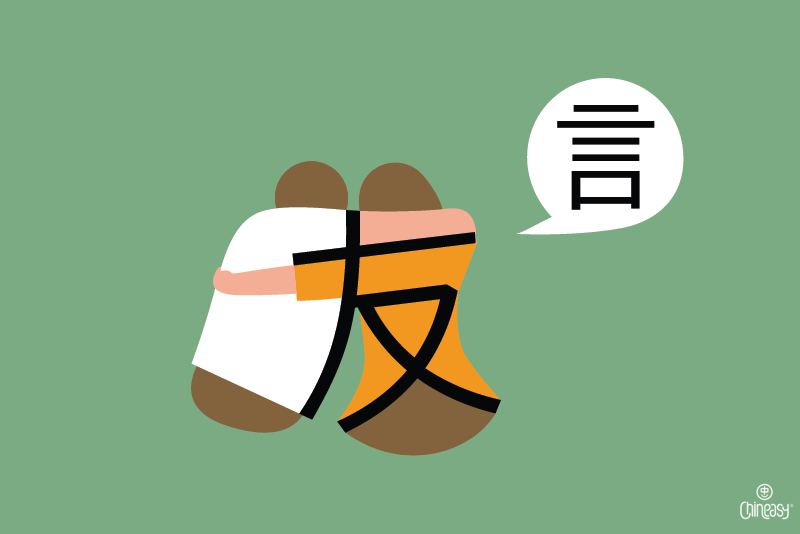Living in China is a gastronomic delight, particularly in bustling Tier 1 cities like Shanghai (上海), Shenzhen (深圳), and Beijing (北京). The dizzying array of restaurants – from high-end establishments to cheap street-side eateries – caters to all budgets, making eating out an affordable and convenient option.
In fact, some argue that dining out in China could even be more cost-effective than cooking at home, given the effort and time required to prepare and clean up after meals. To fully enjoy the diverse culinary scene, knowing the Chinese names of popular restaurants is essential. So, in this blog post, we’ll focus on five global restaurant giants – KFC, McDonald’s, Burger King, Pizza Hut, and Starbucks – that can be found in most major cities in China.
KFC 肯德基
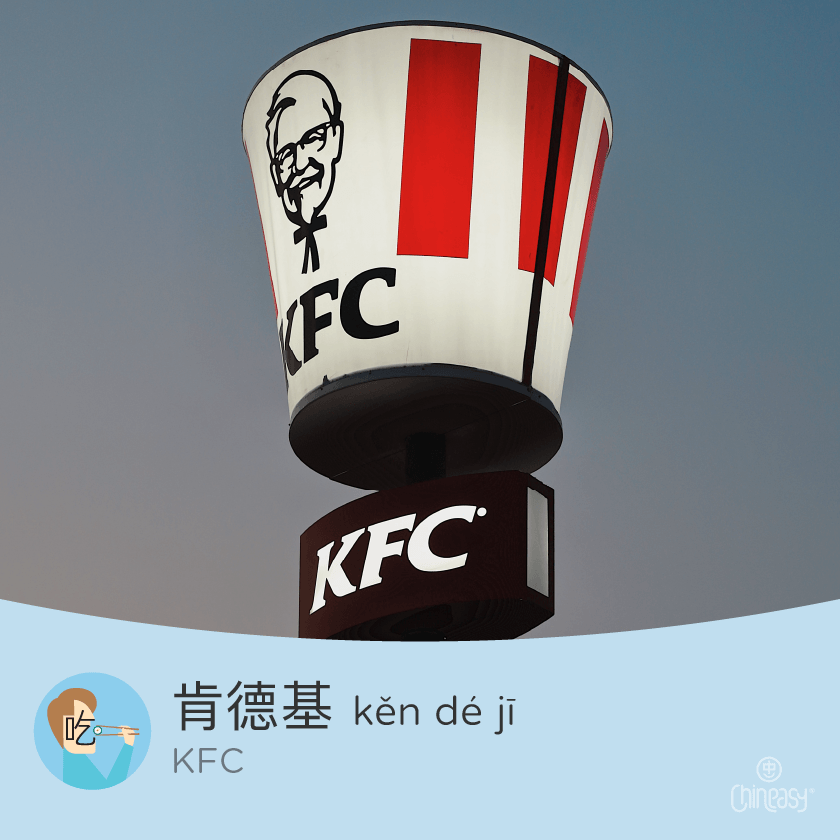
KFC is an American fast-food restaurant chain and is most famous for its fried chicken. It was the first American fast-food chain to enter the Chinese market, opening its first restaurant in Beijing (北京) in 1987. Despite initial skepticism from Chinese consumers who were unfamiliar with the concept of fast food, KFC quickly gained popularity, largely due to its innovative marketing strategies tailored to the Chinese market. In the years that followed, KFC expanded rapidly throughout China and established itself as a household name.
KFC is called 肯德基 (kěn dé jī) in Chinese, which is a transliteration of the brand’s English name. The Chinese characters used in the name also have phonetic significance. The first character, 肯 (kěn), sounds similar to the first syllable of “Kentucky,” where KFC was originally founded. 德 (dé) means “virtue” or “goodness,” while the last character, 基 (jī), means “base” or “foundation.” Together, the characters form a name that sounds similar to the English name while also conveying positive connotations.
Fun facts: KFC China has released many unique menu items over the years that cater to Chinese tastes, including egg tarts (蛋撻/蛋挞; dàn tǎ), rice bowls, tofu burgers and even wraps that contain Peking duck!
McDonald’s 麥當勞/麦当劳
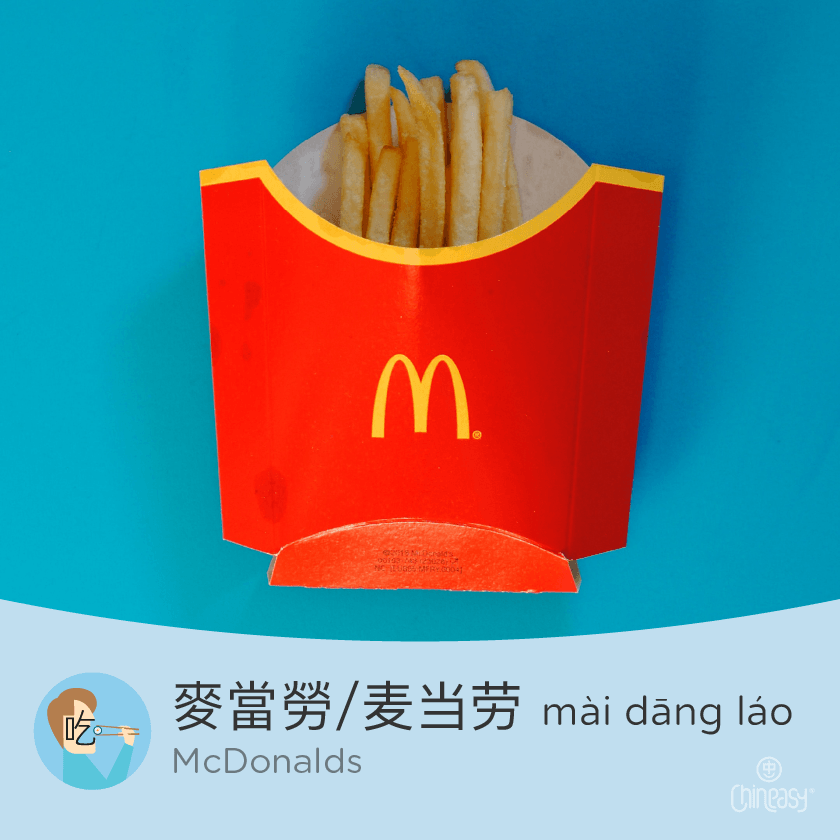
McDonald’s, another American fast-food giant, is renowned for its signature combo of a Big Mac, fries, and Coke. The fast-food chain entered the Chinese market in 1990 and opened its first restaurant in Shenzhen (深圳), a city near Hong Kong (香港). However, it wasn’t an immediate success. Chinese consumers were initially unfamiliar with fast food and skeptical about its quality and safety. To overcome these challenges, McDonald’s tailored its menus and marketing strategies to the Chinese market, including adapting its restaurants to local tastes. These efforts paid off, and McDonald’s gradually gained popularity in China.
McDonald’s is called 麥當勞/麦当劳 (mài dāng láo) in Chinese, which is a transliteration of the brand’s English name. The Chinese characters used in the name also have phonetic significance. 麥/麦 (mài) means “wheat,” which is the main ingredient in McDonald’s hamburger buns. 當/当 (dāng) means “to serve as” or “to act as,” while 勞/劳 (láo) means “labor” or “work.” Together, the characters form a name that sounds similar to the English name while also conveying the idea of serving customers with hard work and dedication.
Fun facts: In 2019, McDonald’s China launched a limited-edition menu featuring dishes inspired by Sichuan (四川) cuisine, including a spicy “Sichuan-style” burger and a “numbing and spicy” grilled chicken sandwich.
Burger King 漢堡王/汉堡王
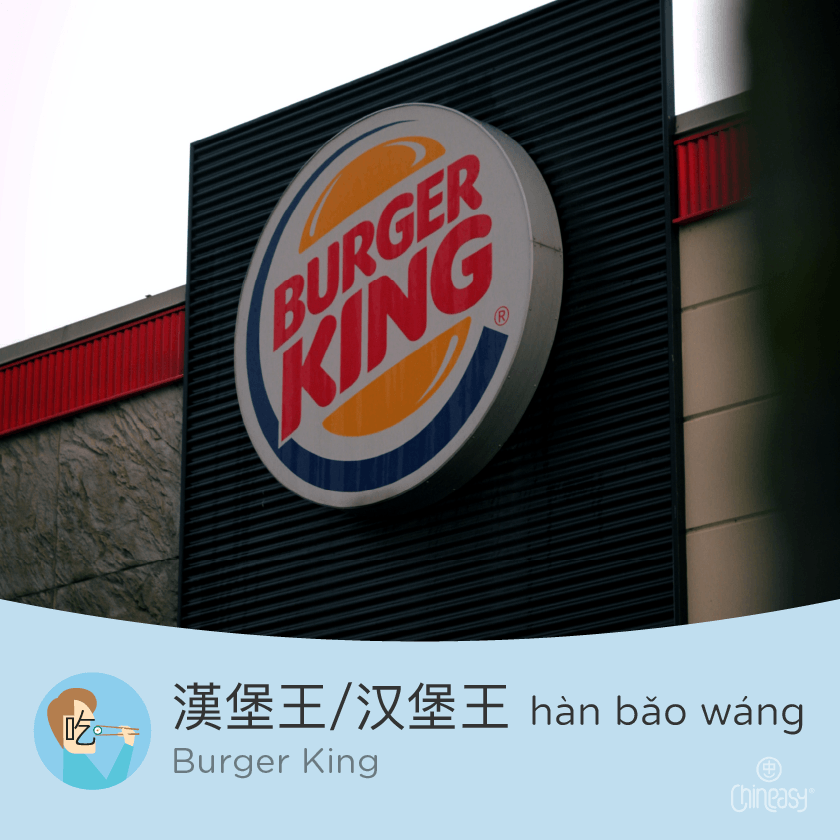
In China, McDonald’s and Burger King are both popular fast food chains and competitors in the market. However, McDonald’s is much more established in China than Burger King, having entered the market over a decade earlier. So, to compete with McDonald’s, Burger King has had to differentiate itself with unique menu items and marketing strategies. For example, in 2018, Burger King China launched a “Flame-Grilled Chicken Burger” that used a traditional Chinese cooking method called “wok-hei” to give the burger a smoky flavor. Burger King has also focused on marketing to younger consumers, using social media influencers and innovative marketing campaigns.
Burger King is called 漢堡王/汉堡王 (hànbǎo wáng) in Chinese. The name consists of two Chinese words: 漢堡/汉堡 (hànbǎo) means “hamburger,” and 王 (wáng) means “king.” The name reflects the chain’s focus on hamburgers and its status as a global fast-food giant. The Chinese name was chosen to be easily recognizable and memorable for Chinese consumers while still retaining the brand’s identity in Chinese.
Fun facts: In 2019, Burger King China launched a limited-edition “Unicorn” burger featuring a rainbow-colored bun and a beef patty topped with lettuce, tomato, and a colorful sauce.
Pizza Hut 必勝客/必胜客

Pizza Hut was established in 1958 in the US by two brothers, Dan and Frank Carney, who envisioned pizza night as a unique experience. They set out to create a pizza empire that would expand beyond the US and become a global phenomenon.
Pizza Hut made its entry into China in 1990, opening its first restaurant in Beijing (北京). The company initially struggled to find success in the Chinese market due to the unfamiliarity of pizza in Chinese cuisine. However, Pizza Hut soon adapted its menu to cater to the local taste buds and began incorporating Chinese flavors into its pizzas, such as Peking duck and seafood. This strategy proved successful, and by the mid-2000s, Pizza Hut had become one of the most popular pizza chains in China, with over 1,000 locations across the country.
Pizza Hut is called 必勝客/必胜客 (bì shèng kè) in Chinese. The name was chosen because it sounds similar to the brand name “Pizza Hut” while also conveying a message of “certain victory” or “must-win customer.”
Fun facts: Pizza Hut in China not only serves its classic pizza and pasta dishes but also has a range of Chinese desserts, such as “red bean pancake” and “sesame balls,” to cater to the local palate.
Starbucks 星巴克
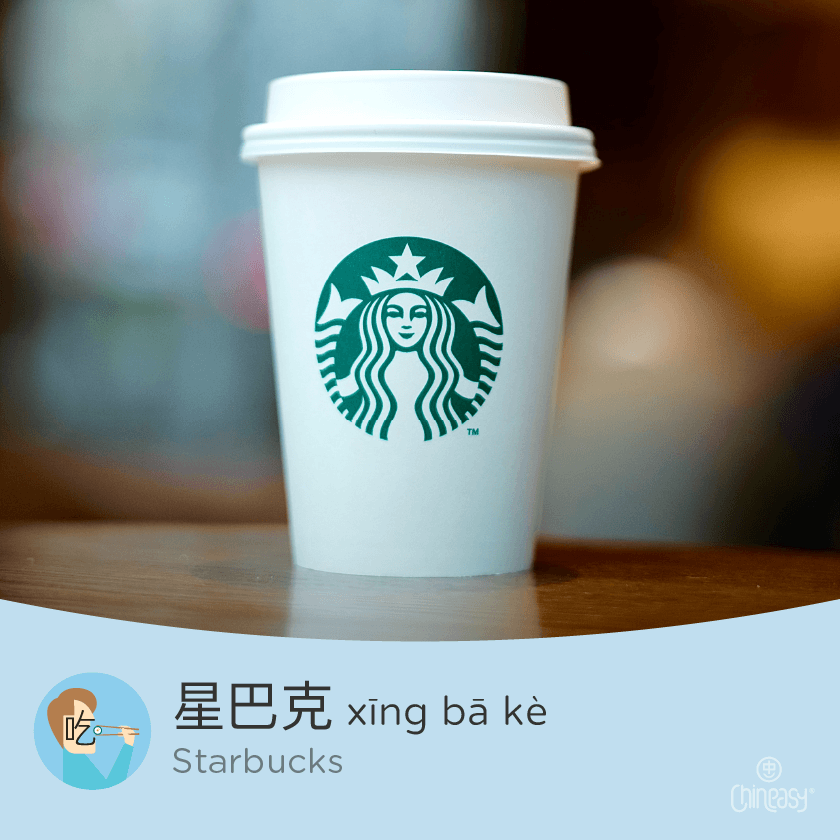
Starbucks, established in 1971 in Seattle, has become the world’s most popular coffeehouse chain. The company prides itself on delivering a superior customer experience and continuously expanding its menu offerings. Starbucks encourages its customers to personalize their drinks to their liking, which has helped build a strong and loyal customer base. This commitment to customization has contributed to the brand’s ongoing success, as customers know they can always get their drinks exactly how they want them.
Starbucks entered the Chinese market in 1999 when they opened their first store in Beijing (北京). At the time, coffee culture was not widespread in China, and Starbucks faced challenges in introducing their products to Chinese consumers. However, they quickly gained popularity among younger generations, and their stores became popular meeting places. They have also introduced localized products, such as tea-based drinks, to cater to local tastes.
Starbucks is called 星巴克 (xīng bā kè) in Chinese, which is a transliteration of the English name “Starbucks.” The first character 星 (xīng) means “star,” referring to the company’s logo. The remaining two characters 巴克 (bā kè) sound similar to “bucks,” the slang term for dollars. The Chinese name is easy to pronounce and remember for Chinese customers.
Fun facts: In 2017, Starbucks opened its largest store at that time in Shanghai (上海), which spans over 30,000 square feet and features a roastery, bakery, and coffee bar.
Congratulations! You have now learned the Chinese names of five major international restaurant chains and explored the interesting stories behind them. We hope you enjoyed discovering the fun facts about each brand, from their unique menu items to their marketing strategies and business expansions. Don’t forget to practice using these names in your everyday Chinese conversations to expand your vocabulary and impress your friends!
